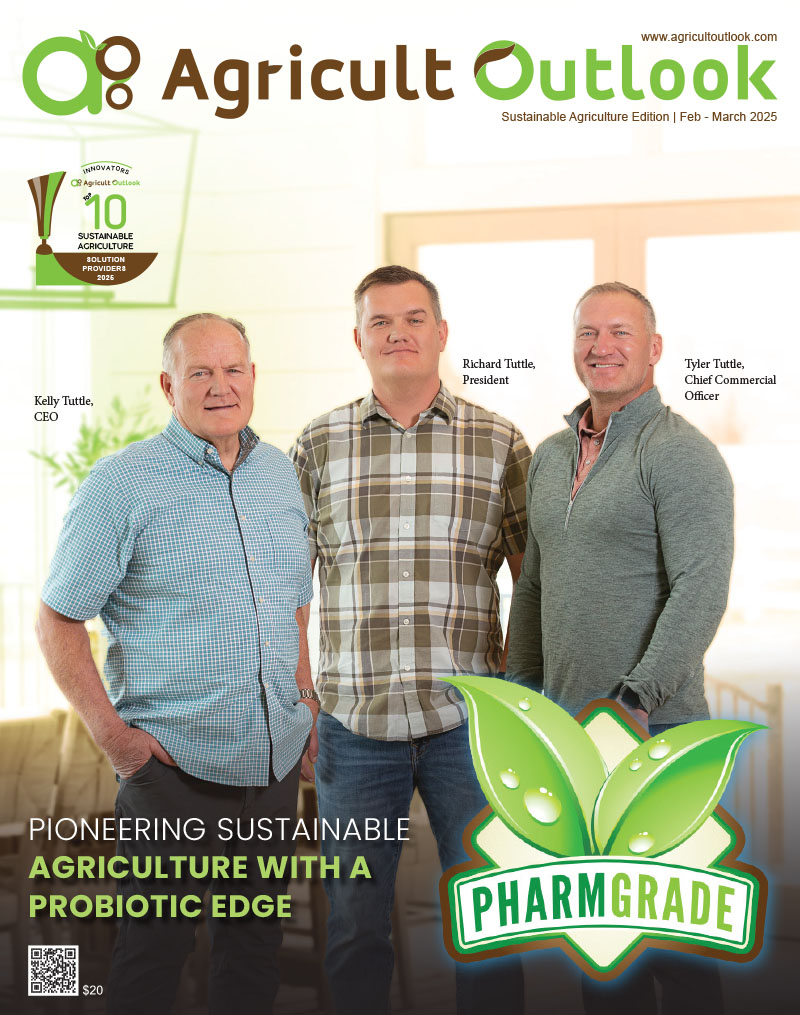Agrology has officially announced the launch of its first ever first real-time, in-field nitrous oxide (N₂O) flux sensor, which marks a major headway for climate-smart agriculture.
According to certain reports, the stated sensor arrives on the scene with the knowhow to serve farmers, academics and supply chain partners who requirescalable solutions to accurately measure nitrous oxide and other GHG emissions at scale in commercial agriculture.
To understand the significance of such a development, we must take into account that, while the agriculture industry has been trying to mitigate its environmental impact in recent times, reducing N₂O emissions and achieving accurate impact quantification has, thus far, proven to be a challenge due to the lack of affordable measurement tools. This particular gap, like you can guess, has forced farmers and supply chains to rely on roughly estimated emissions factors.
In response, Agrology’s new sensor solves this problem at a cost much smaller than research-grade equipment. More on the same would reveal how the technology does that by actually addressing the critical challenge of nitrogen fertilizer management. You see, if you end up applying fertilizer at the wrong time, location, concentration, or in the wrong form, it releases N₂O, and at the same time, causes water pollution and biodiversity loss.
However, once they deploy Agrology’s sensors, growers can measure and verify the impact of climate-smart nitrogen management strategies. Put that alongside nitrogen reduction programs and you have an ecosystem which can support insetting initiatives by providing in-situ data that transparently quantifiesemission reductions. Of course, these growers also stand to gain incentives beyond fertilizer savings.
“Nitrous oxide is the white elephant in agricultural GHG emissions. Affordable, real-time emissions data is essential for growers to see the impact of their sustainable practices,” said Dr. Michael Schuppenhauer, Principal Investigator and Affiliate atLawrence Berkeley National Lab. “Agrology’s Nitrous Flux Sensor is a paradigm shift in sustainable agriculture as it provides any grower with an affordable, accurate, and continuous tool to measure, reduce, and monitor nitrous oxide emissions, and thus enables GHG reductions and innovations at the source while replacing static factors and rigid, non-conforming models.”
Talk about Agrology Nitrous Flux Sensor on a slightly deeper level, we begin from its high accuracy, which is markedly comparable to expensive laboratory-grade equipment. Thanks to this, the sensor can provide precise real-time N₂O measurements across multiple locations.
Next up, there is the technology’s transformative potential, considering the sensor can revolutionize measurement, monitoring, reporting, and verification (MMRV) to reduce dependency on models and estimated emissions factors. Then, we have the prospect of enhanced assessment, a prospect which allows farmers and partners to accurately evaluate the emissions impacts of various farming practices and products, alongside cost and yield, thus enabling better decisions at scale.
Joining that would be the potential for empowerment through data. You see, growers can adjust farming practices based on real-time data and report progress on emissions reductions to conceive continuous improvement.
Hold on, are not done yet. This is because we still haven’t touched on the sensor’s affordability and accessibility. Basically, available at a price point suitable for average farmers, the technology can be deployed across diverse crop types, production systems, and regions, where it will support in-field GHG monitoring at scale.
Rounding up highlights would be the sensor’s broader implications. This includes access to real-time, high-resolution N₂O data across various systems and practices which will expand research and enhance understanding of climate-smart agriculture.
Among other things, it must be mentioned Schuppenhauer has also tested the Agrology Nitrous Flux Sensor for 18 months in commercial row crops. During the course of these 18 months, he compared the sensor against cavity ringdown spectrometers and ground-truth nitrous oxide eddy flux sensors. As for the results, they showed R² value >0.8 for N₂O when compared to measurements from research-grade sensors, delivering comparable performance at a significantly lower cost.
“Accurately measuring N₂O emissions at scale has been a significant barrier, limiting the adoption of practices that reduce greenhouse gas emissions. Our Nitrous Flux Sensor changes that,” said Adam Koeppel, Co-Founder and CEO of Agrology.







